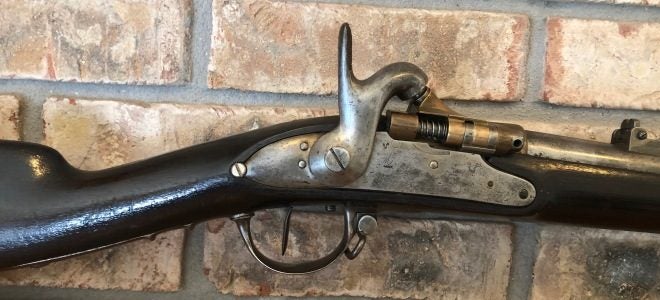This guest post is written by John B Mulloy, a firearms enthusiast and collector who shares his firsthand experience of importing antique firearms from Europe. John tells us about the importation processes that he went through and gives us tips on what to look for and what to avoid when starting the process of importing firearms.
Tips on Importing Antique Firearms Into the United States For the Small Collector
As a relatively new player in the collection of antique firearms, I have discovered that not only can deals be found in the United States, but also in Europe and especially in the United Kingdom. However, due to both laws in the United States and the United Kingdom, importing firearms can be tricky. This article is intended to assist the antique gun collector with national and international importation and shipping of Antique Firearms. For this writing, I am using my experience of importing weapons from The United Kingdom.
My first experience with importing a relic World War I Enfield that spent about one hundred years buried on the Battlefield of Vimy Ridge in France. I had purchased the piece in an auction in the United Kingdom. The process of importing the obvious relic was an absolute disaster. It took forever, it was terribly expensive, frustrating and the airline that handled the shipping was impossible to work with.
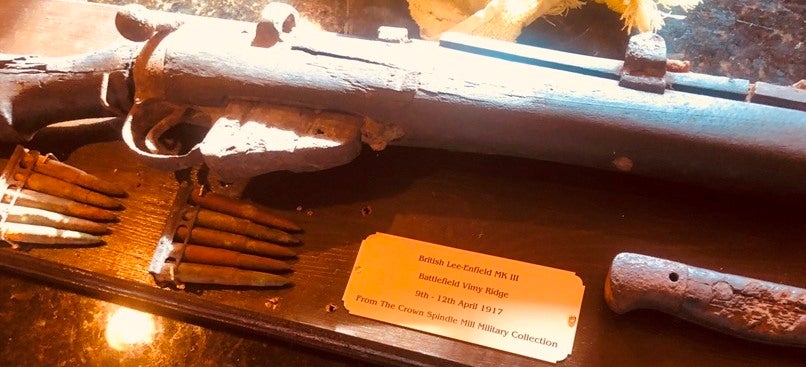
However, with education, my second import was a much smoother event. in my first importation experience, I discovered that there were several reasons why my first import was such a hassle. The first issue was that my import from the United Kingdom included two deactivated British WWI Mills Bombs. United States Customs was most curious about those items in my package. For those that don’t know the Mills Bomb is the British version of the United States fragmentation grenade. Understandably, any shipment that list “bombs” will receive further scrutiny by United States customs. If you import an item that includes the word “Bomb” expect a delay in your piece clearing customs.
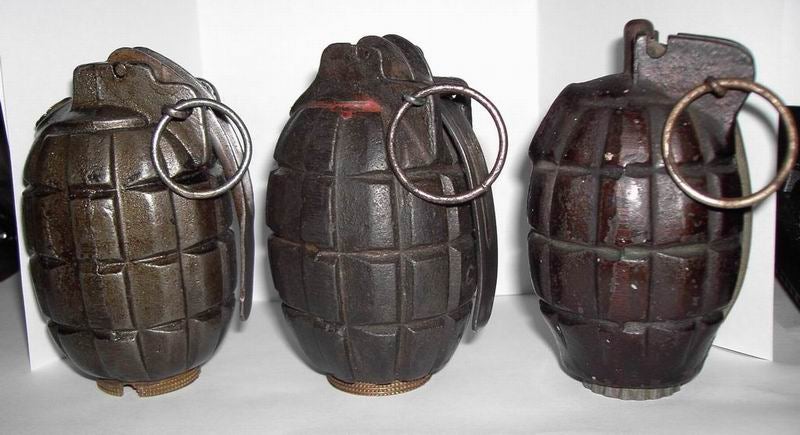
Mills bombs. Source: commons.wikimedia.org
The second issue was my ignorance on international shipping of firearms, and what forms are required to get your firearms cleared through customs. Unlike shipping in the United States where you generally have a fairly standard set of rules to ship firearms (with the exception of certain states), when shipping internationally you are dealing with a different set of rules. Hopefully, this article will assist collectors in the quest for the “Bucket List” piece for their collection with fewer issues than I had on my first experience.
I am sure that most readers will know certain terms that are important and the acronyms for those terms, but let me give some definitions to acronyms I will be using. For the Bureau of Alcohol Tobacco and Firearms, I will be using the acronym BATF. This is the organization that sets up the rules for firearms in the United States and enforces Congressional laws that apply to firearms. I will be using the acronym; FFL and FFL C&R to represent the types of Federal Firearm Licenses that are most common with gun collectors.
Next, there are three general licenses that the BATF issues to firearm dealers or collectors. The categories are further broken down into sub-categories of license. I have added a chart from the BATF to illustrate the different types of licenses (I will be focusing on the FFL and the FFL C&R licenses).
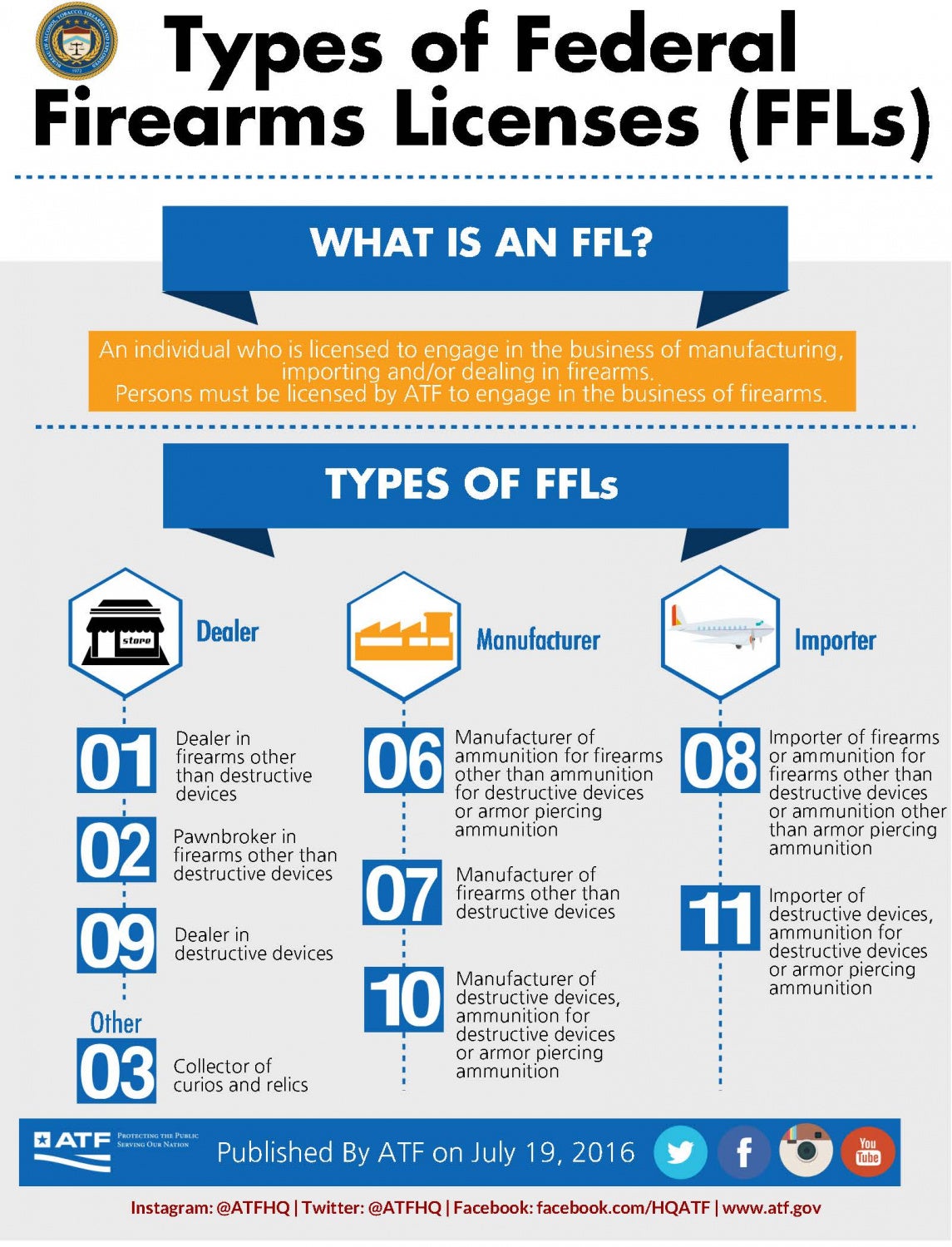
Source: https://www.atf.gov/resource-center/types-federal-firearms-licenses-ffls
The first caution I have for you is importing antique weapons from the United Kingdom is not a cheap process. I have found that often it is advantageous to get with a friend who has also bought a firearm in the United Kingdom, or buy several pieces, to make the total shipping cost much more reasonable.
As far as the process of shipping from the United Kingdom, there is no legal way to ship a weapon out of the United Kingdom without using a licensed shipping agent. Shipping agents will add to the price of shipping. According to the London Gun Company:
We are fully licensed by the Department of Business, Innovation and Skills (BIS) to undertake importation of guns into the UK and export to other countries even if it’s temporary.
The regulations can be quite daunting and can change from country to country, the simple option is to explain your requirements and we’ll manage the rest.
United Kingdom rules and regulation for firearms require a number of documents and require that the shipping agent to complete prior to the weapon being shipped to the United States.
The process of importing your firearm from the United Kingdom is not a quick process. It is often a matter of weeks to get an antique firearm into the United States, but it can take a few months or much longer period of time under extreme cases.
To clear the United States Customs, many people use a shipping agent or import broker located in the U.S. to help them with the clearance of firearms at United States Customs. Using a broker or agent can be expensive and doing the process yourself is cheaper than using a shipping broker. Using a shipping broker on the United States side to clear Customs will be a minimum of one hundred dollars.
I will caution you that each European country has its own set of rules, taxes and forms to complete before a firearm can be exported. For instance, French laws are closer to United States shipping rules. It is highly recommended that you ask the seller, Auction house or dealer what their country requires in forms and export taxes. Therefore, I am keeping this article to just the importation of antique firearms from the United Kingdom. I personally have found British auction houses and their shipping agents to be very helpful and knowledgeable of the process of exportation from the United Kingdom. You might find that some auction houses will suggest a shipping agent. I have found that HGSS (Shipping Services) Limited to be very good at processing firearms from the United Kingdom. Their emails address is; admin@hgss-global.co.uk , phone number +44 (0) 1268 685414.

The Tabatiere is the French version of the American Snider rifle. The Tabatiere is the first breach loading French Rifle. The style of rifle that is shown is an 1822 T-Bis Conversion.
Once the firearm is in the United States, there are clear distinctions on legal importation and shipping of firearms into and inside of the United States. Thus, shipping from the United Kingdom will be made to a specific international Airport. If the piece doesn’t fall into a certain category you will be required to use a shipping agent and the piece will have to be sent to a licensed Gun Dealer.
United States laws for the importation are different for the importation of antique firearms by the date of manufacture and the type of weapon. It is a much easier process for those weapons made before 1898 than weapons made after 1898. Firearms made 1898 or older have very lenient requirements for shipping. The weapon can be received by anyone legally able to own a firearm.
Anything Manufactured after 1898 is going to require a Federal Firearms License (FFL). In many cases, a Curio & Relics License will be enough to process antique firearms. The C&R license is not only helpful, but it is a money saver for the collector. Since you are not forced to have the piece to be processed through a fully licensed gun dealer. The FFL C&R license, in most cases, allows receipt of weapons that are manufactured fifty years or older. This would exclude certain weapons such as machine guns. In all cases, importation of Machine Guns will require an importation license or that the receiver is cut in three places.
Modern firearms, or those manufactured after 1898 and that do not fall under the Curio and Relics criteria, must be delivered to a Federal Firearms Dealer. The BATF requires all modern firearms to be shipped to a holder of a valid FFL and cannot be shipped to an individual without the proper license. As you can imagine if you had to have the piece imported and sent to an FFL dealer, your cost will increase.
So what constitutes an “Antique Firearm” by Federal Law. To be classified as an antique the following must exist:
- Any firearm (including any firearm with a matchlock, flintlock, percussion cap, or similar type of ignition system) Manufactured before 1898, and
- Any replica of any firearm described in subparagraph (A) if such replica is not designed or redesigned for using rimfire or conventional centerfire fix ammunition; or
- Uses rimfire or conventional fixed ammunition which is no longer manufactured in the United States, and is not readily available in ordinary channels of commercial trade; or
- Any muzzle loading rifle, muzzle loading shotgun or muzzle loading pistol, which is designed to use black powder, or a black powder substitute, and which cannot used fixed ammunition. For purpose of this subparagraph, the term “antique firearm” shall not include any weapon which incorporates a firearm frame or receiver, any firearm which is converted into muzzle loading weapon, or any muzzle loading weapon can be readily converted to fire fixed ammunition by replacing the barrel, bolt, breechlock, or any combination thereof.
If your piece meets those requirements then you are pretty well set to begin the process of importing that weapon. The next thing to do is to find out which shipper your United Kingdom shipping broker wishes to use to ship the weapon that you have purchased.
Because we are talking about the United Kingdom the shipping agent must ship the piece to an International Airport. Once you determine the airport then request from the shipper the detail contents of the shipment and have the values for your imports.
Then you need to reach out to the carrier (the guys doing the actual shipping) to get the bill of lading which will have the customer codes necessary to fill out US Customs forms; #7501 and #7523. These are the two forms required to get through the customs process. You can find these forms on the Customs website at https://www.cbp.gov/sites/default/files/assets/documents/2016-Sep/CBP%20Form%207501_Instructions%20%28Fixed%20Links%2009-07-2016%29.pdf.
When your package arrives at customs at your chosen international airport, the usual procedure is to go to the airport customs office and provide them with the required forms, the bill of lading from the carrier and your proper identification. The piece will only clear customs when you get the appropriate customs stamp on your paperwork. I highly suggest that you call the airport’s local customs office and ask them what their procedure is for clearing customs. In my case, I took the required paperwork to the customs office and customs released the package with the appropriate stamp. Ten minutes later I was off to the carrier to pick up my prize.
One of the pitfalls I did on my first import was that I went to the customs office on a Saturday without calling or getting their procedures. Let me tell you not much gets done on a Saturday. Also, remember when dealing with customs, no matter how frustrated you are, be polite and kind to the people in Customs. They can make things much more difficult if you are unpleasant. An additional cautionary remark about this process is that I have had friend advise that you will be charged $50 for the Customs stamp by United States Customs. However, I did not have to pay this fee at my airport.
So what about shipping or receiving weapons within the United States. Remember each state has its own set of rules. You must know what these are before attempting to ship or receive a firearm. Be sure you understand your state’s rules and regulations for firearms.
Inside the United States who can legally ship and receive firearms? Generally, the shipping of weapons pre – 1898 are fine and don’t require any special licenses. Where it becomes different is with the shipping modern weapons and those considered Curio and Relic. If the piece falls into that category of a modern weapon (post 1898 and does not fall into the C&R classification) then you need to use an FFL Dealer to receive your weapon. If the gun is fifty year or old and falls into the C&R classification you can have the weapon shipped directly to you with a C&R FFL license?.
Can you ship legally through common carriers and the US Postal Service legally? Yes — but be aware that many Postal workers are unaware of the rules of shipping firearms and may tell you that they cannot ship firearms. Some might tell you that you have to dismantle the weapon or take out the firing pin. The truth is that they know very little about this area of postal code and less on BATF rules.
I ran into this issue shopping an 1870’s Martini-Henry to a good friend. Even the Post Master did not know the rules. However, being the good Boy Scout that I am I had a copy of; Publication #52, in coordination with Title 18, Chapter 44 and title 26!”, Chapter 53 of the United States Code. Under Exhibit 432.1 and DMM CO24.2.0 “Unliaded Antique firearms sent as Curios or museum pieces are generally permitted”. I would suggest highlighting the appropriate sections. In my case, it was after fifteen minutes of conferences they agreed with me.
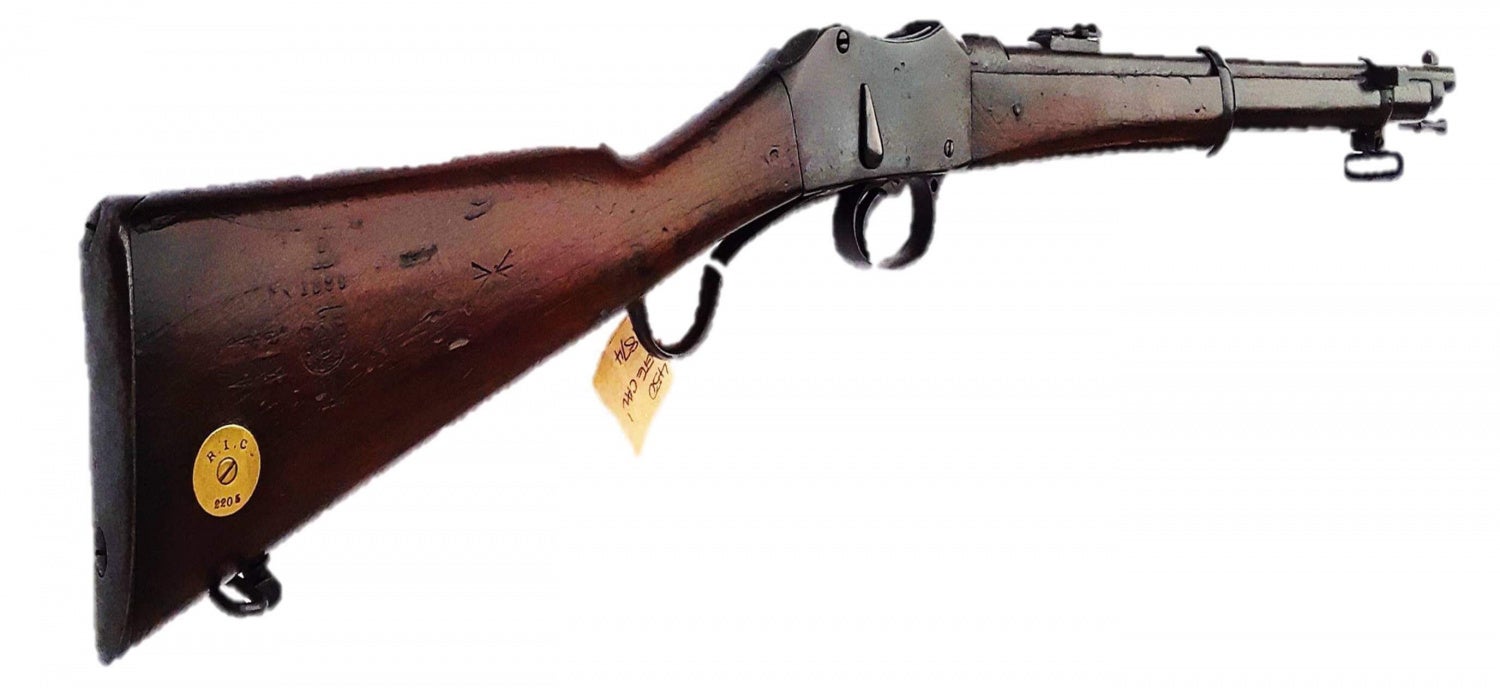
Martini-Henry Carbine
Other common carriers such as UPS and FedEx have their own procedures for shipping. I would check with them by phone or read their rules online. I have included information from their websites as follows:
UPS requirements state; “UPS accepts packages containing firearms (as defined by Title 18, Chapter 44, and Title 26, Chapter 53 of The US Code) for transportation only (a) licenses importers, licensed manufacturers. Licensed dealers, and licensed collectors (as defined in Title 18, Chapter 44 of the US Code) and Government agencies and (b) where not prohibited by Federal, State or local law. (I) from an individual to a licensed importer, licensed manufacturer, licensed dealer, or licensed collector to an individual”.
FedEx has the following rules; “. . . can only accept and reliever firearms between areas in the US under the following conditions:
- You agree to tender shipments of firearms to us only when the shipper or recipient is a licensed manufacturer, licensed importer, licensed dealer, or licensed collector and is not prohibited from making such shipments by local, state or federal regulations
- The shipper and recipient must be of legal age as identified by applicable state law.
There are other nuances with these three carriers and these can be found on their website.
When shipping guns that are post-1898, I find it best to get appropriate copies of the recipients FFL or FFL C & R licenses before considering shipment. Maintain the appropriate records as required by the BATF. Why keep detailed records? Because there are scammers that want to trick you into shipping a firearm that is not legal to ship.
With any such hobby or collection the more you know the better off you will be. There are some excellent deals across the pond at foreign auctions and dealers. To save yourself heartache and cost I recommend calling, getting the names of the people you spoke with and map out detailed instructions for getting your shipment. This could be the difference between a short customs clearance or an indefinite stay in customs limbo. Happy hunting of your antique firearm.
 Your Privacy Choices
Your Privacy Choices
